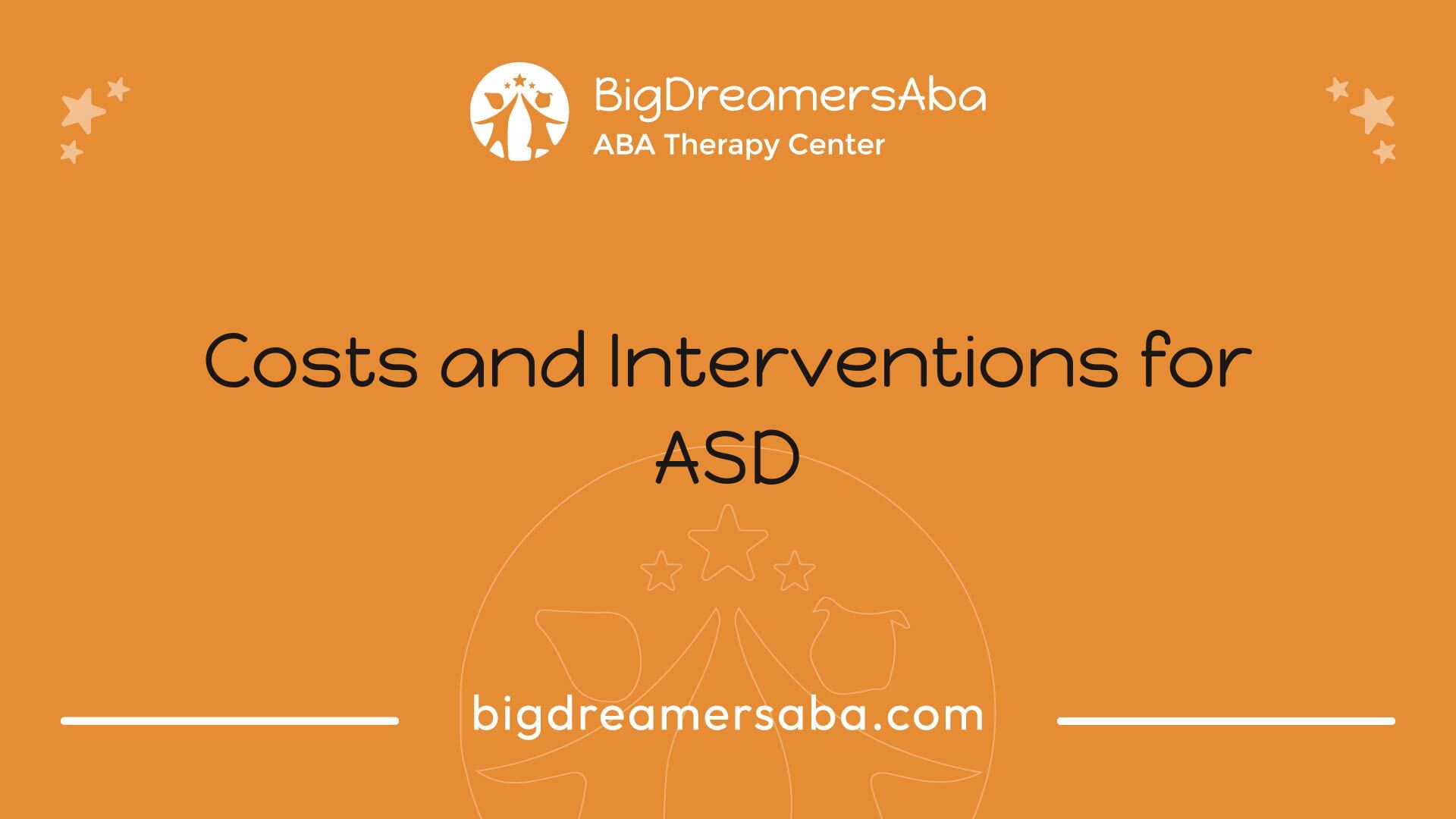Why Autism Happens
Discover why autism happens by exploring its causes, neurobiology, and effective management strategies.


Understanding Autism Spectrum Disorder
Overview of ASD
Autism Spectrum Disorder (ASD) is a complex neurodevelopmental condition that affects approximately one in 68 children [1]. Individuals with ASD exhibit a variety of symptoms and challenges, particularly in the realm of social interaction and communication. Understanding the nuances of ASD requires exploring various aspects, including genetic components and environmental influences. Genetic factors significantly contribute to ASD, with research indicating that 80-90% of the condition may be heritable. Family history plays an important role, as the likelihood of having another child with autism increases if there is already an autistic child present in the family.
Environmental influences, such as exposure to pollutants, also play a part in the development of ASD. Studies have established associations between traffic-related air pollutants and the prevalence of ASD symptoms [3]. Gene-environment interactions are critical in understanding how these factors disrupt normal nervous system development, leading to the symptoms associated with autism.
Factor TypeContribution to ASDGenetic Factors80-90% heritableEnvironmental Factors40-50% of variance attributed to external influences
Impact on Social Skills
Individuals on the autism spectrum often struggle with social skills. They may have difficulty in establishing and maintaining relationships, as well as in reciprocal social interactions. Such challenges extend to communication behaviors, which can include difficulties interpreting social cues and responding appropriately in various contexts.
Techniques such as Social Stories™ and Comic Strip Conversations™ can be utilized to enhance social understanding among those with autism. Social Stories™ developed by Carol Gray, provide structured narratives that explain social situations in an accessible way. Comic Strip Conversations™ offer a visual method to depict social exchanges, helping individuals comprehend social interactions more effectively [4].
Children with ASD often find it challenging to understand and interpret the nuances of social behavior, which can lead to feelings of isolation or misunderstanding. Addressing these social difficulties through targeted interventions is essential to foster better interactions and improve overall quality of life for individuals with ASD. For more on how autism affects aging and daily life, consider our articles on autism life span and how autism affects daily life adults.
Costs and Interventions for ASD

Understanding the financial implications and interventions available for Autism Spectrum Disorder (ASD) is essential for families navigating the challenges associated with this disorder. This section will delve into the financial burdens of ASD and explore the benefits of music therapy as an intervention.
Financial Implications
The costs associated with ASD are significant and can weigh heavily on families. On average, medical costs for individuals with ASD are estimated to be 4.1 to 6.2 times higher than those without the condition. Behavioral interventions alone can range between US$40,000 and US$60,000 per child per year.
The total financial burden related to ASD is projected to rise to over $450 billion by the year 2025. Many families report that having a child with autism affects their lifestyle, family dynamics, and even the quality of life for siblings [2]. The following table illustrates the financial estimates related to ASD:
Cost TypeEstimated RangeMedical Costs4.1 - 6.2 times higherBehavioral InterventionsUS$40,000 - US$60,000 per child/yearProjected Total Financial BurdenOver $450 billion by 2025
Music Therapy for ASD
Music therapy is a beneficial intervention aimed at improving various social skills in individuals with ASD. Studies have shown that music therapy can enhance behaviors such as engagement, emotional connection, social interactions, greeting competency, joint attention, and communication skills [1]. This therapeutic approach leverages the structured and predictable nature of music to foster communication and social interaction.
Incorporating music therapy into an ASD management plan can provide a unique avenue for families to enrich their child’s social development while alleviating some of the emotional burdens associated with the disorder.
Parents looking for support can explore various therapies, including complementary treatments like music therapy, to enhance their child's life and help navigate the complexities of ASD. For more information on support services, read about autism home support services or consider the effects of autism on daily life for adults.
Neurobiological Factors of ASD

Understanding the neurobiological aspects of Autism Spectrum Disorder (ASD) is crucial in unraveling why autism happens. Two significant factors in this area are genetic susceptibility and brain abnormalities.
Genetic Susceptibility
Genetic factors significantly contribute to the development of ASD. Research has indicated that genetic predisposition plays a vital role in the pathogenesis of the disorder. A person inherits a comprehensive set of genes from both parents, which can influence disease risk. It is common for families affected by autism to exhibit patterns that suggest a genetic link.
Twin studies are instrumental in assessing the heritability of ASD. These studies often show that identical twins share a higher concordance rate for autism compared to fraternal twins, implying a strong genetic component. Recent findings suggest that genetic factors account for approximately 40-50% of the variance in ASD diagnosis. Contributing elements include advanced parental age, medication use during pregnancy, and specific genetic mutations associated with increased risk[1].
FactorContribution to ASD RiskGenetic Predisposition40-50%Advanced Parental AgeSignificantMedication Use During PregnancyContributing
[1]: For further insights, visit our page on autism genetic component.
Brain Abnormalities
Brain structure and function abnormalities are also critical in understanding ASD. Research shows that certain brain regions may differ in size and connectivity in individuals with autism compared to neurotypical individuals.
Key areas of interest include:
Understanding these brain abnormalities contributes to a broader comprehension of the neurobiological underpinnings of ASD. Insights from this research can guide effective interventions and support strategies for individuals on the spectrum. To learn more about how autism affects daily life, consider reading our article on how autism affects daily life adults.
By exploring both genetic susceptibility and brain abnormalities, researchers are better equipped to answer the question of why autism happens, paving the way for more tailored approaches to treatment and support.
[1]: Explore additional information on comorbid psychiatric disorders in autism or find resources through various autism organizations.
Comorbidities and Associated Conditions
Autism Spectrum Disorder (ASD) is often accompanied by various comorbid conditions. Understanding these associated disorders can provide insight into the complexities of autism and its overall impact on individuals.
Epilepsy and ASD
Research indicates a significant link between autism and epilepsy. Approximately 10-30% of children with autism experience seizures, and about 8% of children with epilepsy also exhibit signs of autism. This suggests that epilepsy and autism are commonly comorbid conditions. Abnormal electroencephalograms (EEG) are observed in around 60% of children with autism, a stark contrast to the 6-7% seen in typically developing children.
ConditionPrevalence in Children with ASDPrevalence in Epileptic ChildrenEpilepsy10-30%8%Abnormal EEG60%6-7%
Sleep and GI Disorders
Gastrointestinal (GI) issues are another common comorbidity in children with autism. Estimates of prevalence for GI disorders in those with ASD range from 9% to as high as 91%, with chronic constipation being the most frequently reported issue. The interplay between GI symptoms and ASD may point to an underlying pathophysiology that connects both conditions [6].
GI ConditionEstimated Prevalence in ASD ChildrenAny GI Problem9 - 91%Chronic ConstipationMost Common GI Issue
In addition to gastrointestinal issues, sleep disorders also commonly affect individuals with ASD. Many children with autism experience difficulties with sleep, which can exacerbate behavioral issues and affect overall health. Addressing these comorbid conditions is essential for effective management of autism.
For more insights into various aspects of autism, including genetic links and intervention strategies, visit our articles on autism genetic component and autism home support services.
Environmental Factors and Autism
Environmental factors may play a significant role in the development of Autism Spectrum Disorder (ASD). Growing research suggests that exposure to certain chemicals and substances during critical periods in development can increase the risk of autism.
Pesticides and ASD
Pesticides are among the environmental factors that have been studied in relation to autism. Specifically, prenatal or postnatal exposure to pesticides, particularly pyrethroid and organophosphate compounds, has been linked to an elevated risk of ASD in children. Studies indicate that maternal exposure to these pesticides during pregnancy or early childhood can increase the likelihood of autism onset [7].
The mechanisms through which pesticides may contribute to autism involve neurodevelopmental risks. For example, pyrethroid pesticides are thought to activate microglial cells, which can lead to neurodegeneration and increase the risk of developmental delays in children [7].
Type of PesticideAssociated RiskPyrethroidLinked to neurodegeneration and increased ASD riskOrganophosphateAssociated with higher ASD onset in exposed children
Role of Environmental Chemicals
Beyond pesticides, various environmental chemicals have emerged as potential risk factors for autism. Exposure to tobacco smoke, air pollutants, volatile organic compounds, and metals has been implicated in studies examining the connection between environmental factors and ASD. For instance, traffic-related air pollutants have been shown to correlate with autism incidence [3].
Additionally, organic endocrine-disrupting compounds such as flame retardants, non-stick chemicals, phthalates, and bisphenol A are of concern. These substances can interfere with normal hormonal functions and may adversely affect neurodevelopment, potentially leading to conditions like ASD [3].
Chemical ClassPotential EffectsAir PollutantsAssociated with increased autism riskVolatile Organic CompoundsLinked to neurodevelopmental issuesEndocrine DisruptorsPotentially harmful to brain development
Understanding the influence of environmental factors such as pesticides and chemicals provides insight into why autism happens. As awareness of these associations grows, prevention strategies can be implemented to reduce exposure during critical developmental periods. Further research is necessary to solidify these connections and inform public health recommendations.
Management Strategies for ASD
Effective management strategies for Autism Spectrum Disorder (ASD) are essential for supporting individuals in navigating daily challenges. Social interaction techniques and addressing sensory processing challenges are two critical areas for intervention.
Social Interaction Techniques
Improving social skills is a vital part of managing ASD. Several techniques can be employed to enhance social interaction abilities.
These strategies can be tailored to fit individual needs and preferences, providing a structured way to build social competence.
Sensory Processing Challenges
Individuals with ASD often experience sensory processing difficulties, which can impact their daily lives. Addressing these challenges is crucial for effective management.
To manage sensory processing challenges, various strategies can be implemented, including:
StrategyDescriptionSensory Integration TherapyTailored interventions help individuals process and respond to sensory information more effectively.Environmental ModificationsAdjustments to surroundings can reduce sensory overload and enhance comfort.Mindfulness TechniquesActivities like deep breathing or yoga can help individuals cope with overwhelming sensory input.
By incorporating these strategies, individuals with ASD can improve their social interactions and better manage sensory processing challenges. Exploring various intervention methods can contribute positively to their overall well-being and daily functioning. For further insights on how autism can affect daily life, including adults with ASD, visit our article on how autism affects daily life adults.
References
[2]:
[3]:
[4]:
[5]:
[6]:
[7]:
[8]:
Recent articles
.jpg)
Nature Walks and Social Skills: ABA Strategies for Calm Outdoor Learning

How ABA Helps Kids Handle Winning, Losing, and Sportsmanship
.jpg)